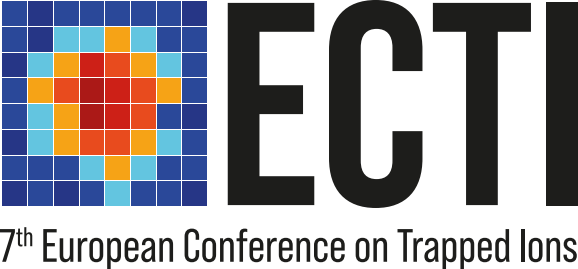Speaker
Description
Exotic atoms, formed by substituting one or more of their constituents—electrons, protons or neutrons—with others of the same electric charge, have played a pivotal role in studying the fundamental interactions in nature. Antiprotonic exotic atoms, containing at the same time matter and antimatter can be used to test matter-antimatter asymmetries, one of the unresolved questions in modern physics. The advancements in ion trapping technology unlock novel possibilities for controlled synthesis and manipulation of these exotic systems directly within traps.
Antiproton Deceleration (AD) and Extra Low Energy Antiproton (ELENA) rings at CERN are the world’s only source of abundant, low-energy antiprotons appropriate for synthesis, manipulation ad studies of antimatter. At the Antimatter Experiment: Gravity, Interferometry, Spectroscopy (AEgIS) up to $3.7 \times 10^6$ of antiproton particles are trapped and utilized to study of antihydrogen atoms. The experiment uses pulsed production mechanism by merging cold antiproton plasma with Rydberg-excited positronium (Ps*) cloud and the subsequent charge exchange:
$$
\overline p + Ps^* \rightarrow H^* + e^-.
$$
Anionic molecules can be trapped and cooled down in the Penning-Malmberg traps of the AEgIS experiment together with antiprotons. After neutralization and Rydberg excitation of the anions $$A^- \rightarrow A^*$$ a cold antiproton replaces an electron of the outermost atomic orbital, leading to synthesis of the exotic atom:
$$
\overline p + A^* \rightarrow \overline pA^* + e^-.
$$
Previously, exotic atoms were created by injection of MeV antiprotons into bulk gaseous or solid materials. The result has been an instantaneous ejection of orbital electrons and consecutive antiproton annihilation on the nuclear surface without the possibility of a detailed study of the full process.
In our approach, we aim to achieve a controlled exotic atom formation, in a cold, near static system. By using heavy and mid-heavy ions we will extend the lifetime, magnify and diversify observable processes: orbital electron ejection, surface annihilation and nuclear fragment formation. In our method, we will be able to perform measurements at every stage of the process, from Auger cascade and fluorescent spectroscopy of ejected electrons to measurement of half-life of Highly Charged Ions and nuclear hyper-fine structure after nuclear fragmentation.

